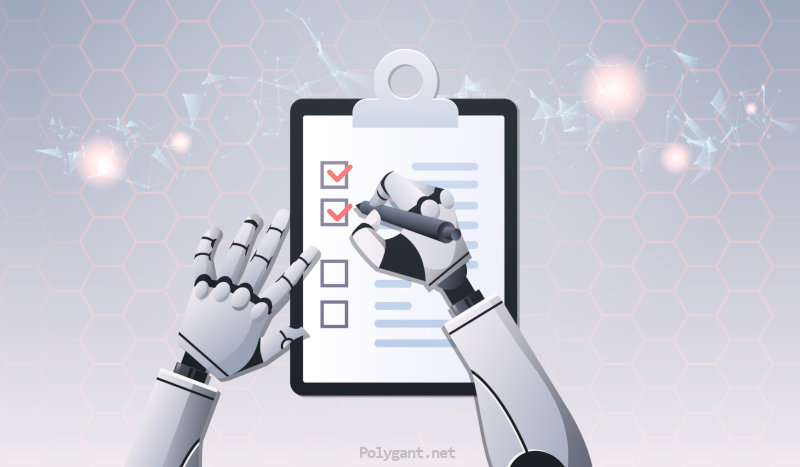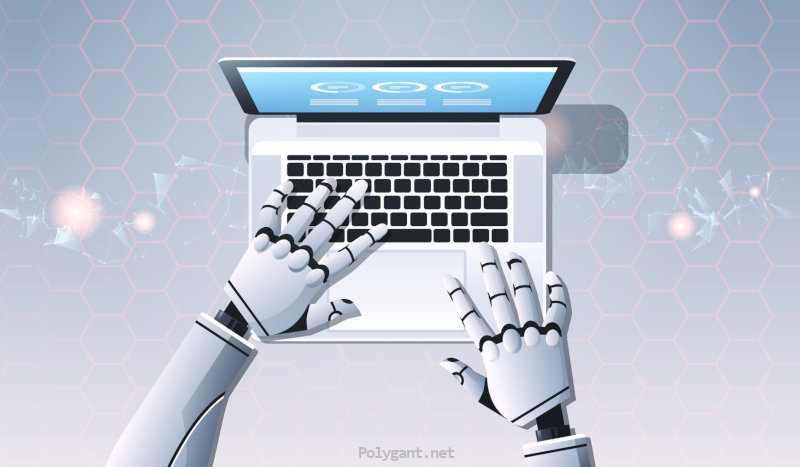Artificial Intelligence completely disrupted and refashioned our world. It changes virtually everything: methods of work, communication and transport means, etc. That creative destruction initiated by AI will lead to irrelevance of numerous jobs and skills and, at the same time, introduce previously unknown ones. The originating competition between the US and China in this area perfectly reflects AI’s predominance and impact.
In 2018, the most prominent AI trends were the growing number of AI-based apps, workforce robotisation, and China’s superiority in the number of patents and startups regarding and based on this technology. Both hopes and scepticism toward AI continue evolving in 2019. And in this text, we will describe the tendencies that became the most significant.
AI microchips
AI completely relies on specialised processors operating in alliance with the CPU. A bottleneck in this context is CPU itself, as even the mightiest one is not capable of ‘teaching’ an AI model. This definitely requires additional equipment to perform mathematical calculation in such complex processes as object detection and face recognition. Within this year, the world’s leading microchip manufacturers are to release proprietary AI accelerators: TPU, DPU, IPU. These chips will give language processing and speech recognition processes a noticeable boost. Moreover, such research and development activities will trigger off new applications in health care and automotive industry.
AI-IoT tandem
Artificial Intelligence, as well as the Internet of Things, move along to the edge computing. Most of the models ‘raised’ in the cloud will be transferred to the edge layer. The scope of using AI in the industrial IoT will also rise as it will ensure high accuracy and richer analytics and diagnostics. Also, AI can optimise complex machine learning models built on neural networks. This said, the IoT is armed to become the key drive of implementing the power of AI.
Automated Machine Learning
With the emergence of automated learning algorithms, machine learning is likely to change dramatically. Making use of such algorithms, developers and programmers will sort out complex tasks without creating highly-tailored models. The cornerstone advantage of automated machine learning is that the engineers will concentrate on the problem itself instead of getting distracted by the routine. AutoML can be seamlessly integrated with cognitive APIs and machine learning platforms, as its algorithms are both flexible and portable.
Cybersecurity and Artificial Intelligence
The gap between the supply of and demand for cybersecurity specialists, long-established deficiencies of this field, and ever-aggravating breach risks are what dictates the necessity for innovative approaches. This is why the use of AI and ML for the sake of cybersecurity is expected to grow further. However, implementation of such techniques never means we will not need human experts anymore. In fact, AI will just enhance experts’ capabilities and make the system more reliable. As long as the system complexity continues to grow and the incessant threat monitoring remains the vital necessity, the processes will become vulnerable and efficiency drop unless the cybersecurity advancements involve AI.
AI handling skills
Last year they reported the AI-related jobs were going to be top-rated in the market, while major companies were to retrain their engineers. This trend survives this year, but the companies face the barely-overcomable problem, lack of AI operation skills. On the other hand, enterprises set sights on another alternative, creating AI-powered devices no requiring control. All this means the only thing: companies still need specialists who can tame artificial intelligence.
AI-inspired DevOps automation
Applications already generate tons of data that need to be filtered for the subsequent analysis. One can collate data sets to find new patterns suitable for the use in further software. Applying machine learning to such data may make them more predictable. Furthermore, seasoning with AI will transform the way of managing the computer infrastructure. Deploying AI in operations can facilitate task resolving and failure cause identification. In 2019, AI-employing DevOps processes will start working.
Compatibility of neural networks
When forming neural networks, the highest-priority objective is to find an appropriate framework. In this regard, it is a pain for engineers to choose a development instrument. And the worst thing is that it is extremely difficult to switch to another framework after starting establishing the system. Challenging interaction between neural networks considerably impedes implementation of the whole technique.
Open-source AI
Cloud computing, a mainstream-use tool, stem from open-source projects. As the majority of businesses endeavour to cooperate and share knowledge, Artificial Intelligence growth is likely to follow the same path. Specifically, open-source AI will become the next stage. Today, a plethora of companies make the code of their AI-based programs public to centre a community network around them. This will result in development of new open platforms built on this technology.


 Telegram
Telegram 
